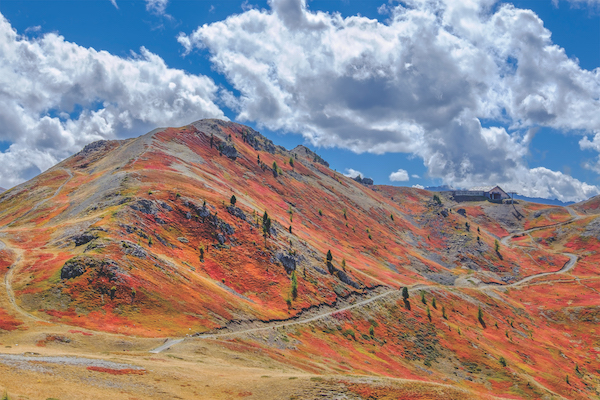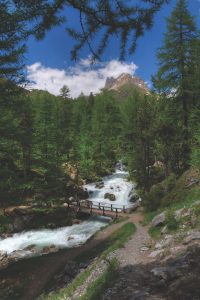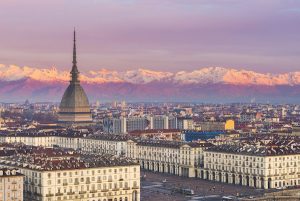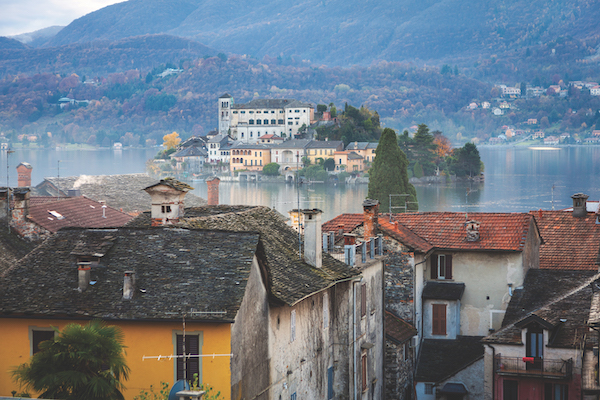If you’re thinking of a new life in Italy, Piedmont could be for you. Fleur Kinson discovers the property potential of this spectacular northern region…
Photos by Getty Images

Piedmont lies in the far northwest of Italy and gets its name from its location at the ‘foot of the mountains’. It is bordered by Alpine ranges offering plenty of winter sports, making it a popular and long-established mecca for ski enthusiasts. The flat plains below the mountain ranges are an important centre for industry as well as being renowned for the quality of their gastronomy and wine production. Indeed, Piedmont produces some of the very best wines in the world – Barolo and Barbaresco are the most famous, but sparkling white Asti is a popular festive favourite. The truffle fairs of Alba also attract a global audience. The climate is distinctly continental in the mountainous north; the south of the region is just 30 miles from the Ligurian coast and consequently much milder.

The Alps
To the west, about 60 miles from Turin, nestling in the Alps, are the twin valleys of Di Susa and Di Chisone, part of the evocatively named Via Lattea (‘Milky Way’). This is the main winter sports area of Piedmont, a network of resorts that offers more than 400 miles of slopes and ski runs. It is also an important point in the Tour de France and Giro d’Italia bike races.
The facilities and infrastructure here are modern and sophisticated. Access by car and public transport is easy as the main Italy-France road and rail connections run right through the Valle di Susa. The main ski resorts are Sestriere and Bardonecchia. Sestriere was Italy’s first purpose-built ski resort and is still the most fashionable. Bardonecchia is popular with snowboarders.
The Cervino (Matterhorn) area to the northeast is worth exploring for skiing properties. The summer in this area is popular too as the landscape lends itself to hiking and other outdoor pursuits.
Turin
Turin, the capital city of Piedmont, stands in the wide, flat plain of the River Po against the dramatic backdrop of the snow-peaked Alps. Home to a sophisticated café culture, Fiat cars and the Juventus football team, Turin also played host to the 2006 Winter Olympics. Cultural highlights include the largest collection of Ancient Egyptian artefacts outside Cairo and, of course, the Turin Shroud.

With a population of about 1,000,000, this is an elegant city of wide boulevards, its famous arcaded walkways and lots of attractive architecture – not least the impressive Mole Antonelliana, named after its architect, Alessandro Antonelli. (Una mole, by the way, here, is not a small mammal but a general term for a grand building.)
With the advent of cheap flights, Turin has become an accessible destination for long weekends, with diverse attractions such as fine cuisine, art and culture – not forgetting the excellent shopping!
Lakes Maggiore and Orta
Piedmont has two important lakes. The western shore of Lake Maggiore forms the border between Piedmont and Lombardy, while Lake Orta is completely contained within Piedmont’s boundaries. Its western shoreline, which includes the popular resort of Stresa, is one of the most beautiful lakeside locations in Italy.
Its mild climate makes it a much-loved holiday destination, with elegant towns of lakeside villas against a backdrop of mountains. The picturesque Borromean Islands have been owned by the Borromeo family since the 15th century. The most famous island in the lake is Isola Bella, on which stands a magnificent 17th-century Baroque palazzo.
Lake Orta, in the western Alpine foothills, is much smaller, a mere 13km by 1km. Lesser known than Lake Maggiore, it is also far quieter than its larger neighbour. The jewel in its crown is the exquisite medieval lakeside town of Orta San Giulio, while further inland you’ll find the Sacro Monte nature reserve, notable for the 20 small chapels containing extraordinarily lifelike tableaux from the life of St Francis.

The south, Alba and Asti
Southern Piedmont is the rich agricultural powerhouse of Italy. The province of Cuneo lies here between the Alps, the source of the River Po and the low hills known as Le Langhe. Rice is cultivated in the paddy fields on the fertile plains and, unsurprisingly, risotto is a favoured local speciality.
Further south, the hills of Le Langhe that rise above the flat valley provide microclimates that have been used to cultivate the fruit of the vine for more than 2,000 years. The fine wines produced in the area, notably the Nebbiolo-based Barolo and Barbaresco, are renowned throughout the world.
The fortified hill-towns scattered here are evidence of the region’s turbulent past, with castles dotted along the skyline. The area is also a paradise for foodies with locally produced delights in every town and excellent restaurants ranging from the simple trattoria to Michelin-starred elegance. Cuneo and Bra merit the visitor’s attention, while one of the most famous towns is Alba, home of the celebrated white truffle. Its annual truffle festival runs for five weeks every autumn, where these precious fungi change hands for extraordinary amounts of money.
Travelling north from Le Langhe to the Monferrato hills, the elegant city of Asti is also a haven for gastronomes. Its eponymous sparkling wine might be the first thing that comes to mind, but the city itself has more to offer, with a well-preserved centro storico and a palio every September that is older than Siena’s by more than 400 years.
For more detail about buying a home in Piedmont, see Fleur’s Homes in Piedmont article
